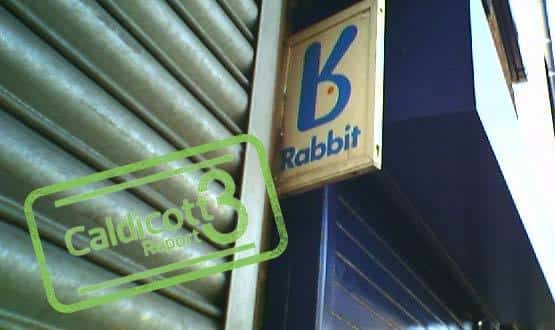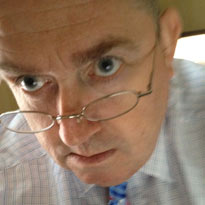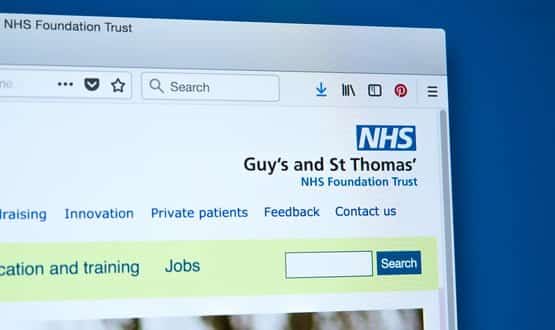Joe’s view: of Caldicott 3
- 12 July 2016

Remember the ‘80s? Sure you do. Big hair, pixi boots, Frankie Goes to Hollywood, HIV, Reagan, Thatcher, Gorbachov, Back to the Future, Usenet, Amstrad, Rabbit. Yeah, Rabbit. You don’t remember Rabbit?
Me neither, until reminded of it recently by my colleague Jonathan Richardson, chairman of the Royal College of Psychiatrists IT Committee. Lots of stuff got invented in the ‘80s, including the internet. Rabbit, Jonathan reminded me, was an early attempt at the mobile phone.
Mobile, but not as we know it
It wasn’t really a mobile phone as we know it today; it was more like a household cordless phone on steroids. Rabbit built a network of base stations, which were signposted with the blue Rabbit signage.
In order to make calls, you had to locate a sign and get to within 100 metres of it in order to make outgoing calls. You couldn’t receive calls because the network usually couldn’t find you.
All in all, it was only a slight improvement on the telephone box. (For younger readers, this was a government funded prostitution advertising unit in which you could also make a phone call. Phone boxes were phased out because they were frequently mistaken for a pissoire by French visitors, if their smell was anything to go by. A classic user interface error).
In a way, Rabbit bears a lot of resemblance to the wi-fi calling and data streaming I was using in Turkey last week to keep up with Euro 2016 and the Brexit debacle.
Wi-fi is ubiquitous and free in Turkey, in restaurants, bars: even on boats. Base stations are everywhere, so while I’m there I don’t have to buy expensive data or pay expensive roaming charges.
Rabbit’s problem was that it was ahead of its time. As a result, it recognised the need for mobile but delivered a service that fell just short. It was axed in 1987 when the early GSM phones arrived with their killer unique selling point – they could take incoming calls.
Dame Fiona Caldicott’s elegant formulation
It’s been alarming to watch the UK political situation deteriorate from Turkey and even more alarming to get back and see that it wasn’t just a raki-induced nightmare.
The only good news is that we got Dame Fiona Caldicott’s latest report and the death of care.data in the middle of the maelstrom. The care.data fiasco has been a toxic cloud hanging over sensible local data sharing projects, which are blossoming all over the country.
So the nation once again owes a debt of gratitude to Dame Fiona, for I feel the publication of her report and the cancellation of care.data on the same day cannot be entirely unrelated. Obviously, the publication being on the same day as the Chilcot report into the Iraq war was entirely coincidental.
Dame Fiona is, of course, a psychiatrist like myself. A key part of the training of a psychiatrist is a task we call “formulation”.
After getting the patient to explain their life story using a carefully structured interview to extract all the relevant information, the psychiatrist summarises this complex and multifaceted story into a short summary called the “formulation”.
This explains the physical, psychological and social aspects of the problem and outlines the plan of how to solve the problem.
The skill is in taking a messy complex situation and making sense of it. Dame Fiona is clearly a master of the art and her latest report is, as usual, concise, readable, respectful of patients’ rights and full of common sense. We should all read it so that we can all make informed contributions to the consultation and public debate she has called for.
The right opt-out model?
The only issue I would raise is the proposed consent model for sharing information for secondary uses. Dame Fiona proposes that patients should be able to opt-out of having their identifiable data used for administration or research; or both (whether this should be one opt out or two is subject to consultation).
This seems a little binary compared to the elegant organisational Information Sharing Gateway recently produced in Cumbria, which allows organisations to choose their “Circle of Trust”.
I wonder if something similarly elegant and simple couldn’t be produced to allow patients to choose their own circle of trust. This might or might not include social services, which have a very different culture around information sharing compared to the NHS.
Caldicott does call for a solution that allows the patient to record their sharing preferences once and to be allowed to change their mind. How might we do this?
Well, perhaps every citizen could be given an NHS account where they could register with their email address and set a password.
During their registration they could set their privacy settings to suit their needs and views. It’s not the 98% who don’t care about this stuff that your consent model has to satisfy: it’s the 2% who that you have to satisfy.
The 2% have been characterised as tin foil hat wearers but in reality the 98% should be grateful to them for taking such a keen interest; without it we’d never have exposed the shambles of care.data.
Brexit is also a reminder that it is foolish to assume democracy will always deliver benign, decent governments about which we don’t have to worry.
It will be interesting to see during this consultation see if the 2% will accept Dame Fiona’s simple (oversimplified?) consent model. If they don’t, then we could revisit the emasculation of the NHS Summary Care Record and the Downfall videos of care.data for a few more years.
There’ll need to be an app for that
Maybe, if we had started recording consent ten years ago the task would be over by now. But, instead, we keep trying to make an implied consent model work in a world in which all other organisations record your privacy settings explicitly when you register for the service.
This would suggest that patient would need to log-in and record their privacy settings. Maybe they could also use their account to store health information and communications with their health providers?
Going back in time again: remember HealthSpace? HealthSpace was an early attempt at a personal health record, born of the National Programme for IT in the NHS.
Unfortunately, HealthSpace was difficult to access was a bit anorexic from an information point of view; so it got criticised. You had to take your passport and utility bills down to the GP to be allowed access; a bit like walking to the Rabbit base station.
NPfIT’s response was to tell the HealthSpace team not to publicise it to avoid further bad press. Consequently, no-one used it and a year later it was cancelled because “no-one is using it”.
Calling HealthSpace
Maybe HealthSpace, like Rabbit, was just too far ahead of its time. Could somebody now knock-up a HealthSpace smartphone app for me please, which includes a more granular set of privacy settings than are proposed in Caldicott 3?
Also, can we eliminate the walk to the GP/base station using a Spine 2 connected authentication process? Shy bairns get nowt.
Put the patient in charge of the IG and the consent headache goes away producing what I like to call a consent–rich research environment.
Maybe the GP system suppliers could integrate this HealthSpace app functionality into their existing smartphone apps? On your marks EMIS, on your marks TPP. Ready, steady, go back to the future.
|
Joe McDonald
|





